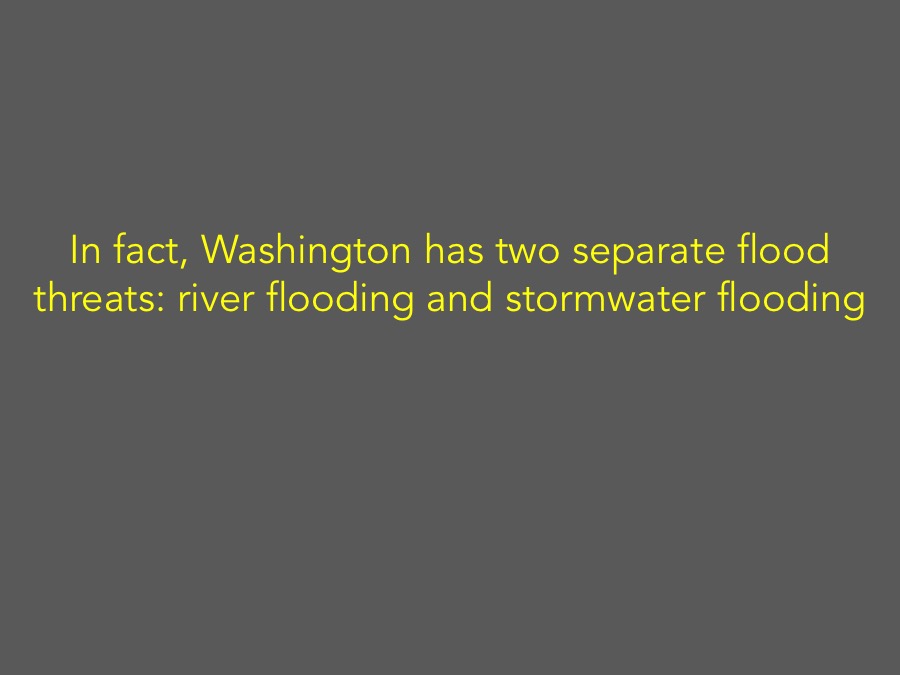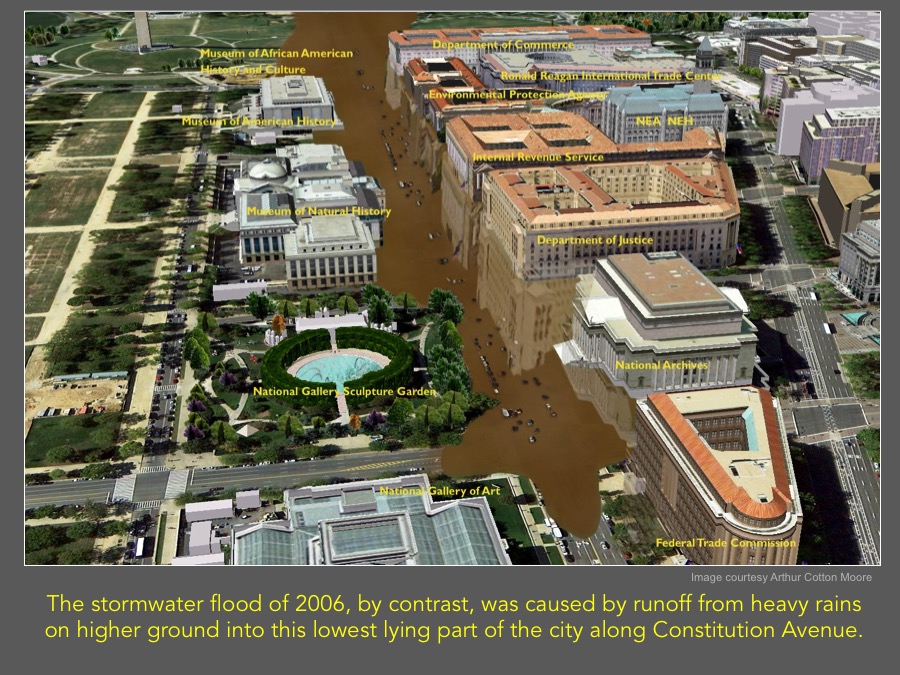By Judy Scott Feldman
On Sunday, December 31st, The Washington Post published a deeply researched and eye-opening front-page story, “A struggle to avoid drowning,” plus five full pages more, about flooding in our nation’s capital. The story revealed an at-best mixed record of DC and federal agencies in addressing the urgent and growing threat throughout the capital.
The online version includes flood maps, illustrations of myriad buried creeks and streams, and photographs of historical and recent flooding to further explain the roots and continuing threat. A reconstruction of the Potomac River’s original shoreline shows the Lincoln Memorial stranded in the river and the African American Museum sitting atop Tiber Creek.
The Post has done DC residents and all Americans an invaluable public service. The National Mall Coalition has testified for years before the National Capital Planning Commission and Commission of Fine Arts about the need for a comprehensive flood plan for our capital and the Mall, only to be dismissed or ignored. And we have called for a commission that can help plan for the Mall’s future as more memorials, monuments, and museums are proposed and approved.
Now that The Post has alerted the public, how will Congress and the planning commissions respond? We’ve written to the Commission of Fine Arts and the National Capital Planning Commission asking for an answer.
The Coalition agrees with Ed Stierli at the National Parks Conservation Association whose letter in The Post says “It’s time for Congress to establish a commission focused on addressing the National Mall’s climate resilience . . . Federal agencies must stop the finger pointing and prioritize saving the National Mall for future generations.”
• Judy Scott Feldman is a founder and Chair of the National Mall Coalition
Photo Gallery: Devastating Floods are a Historic and Ongoing Problem for the National Mall
Tags: Flooding














